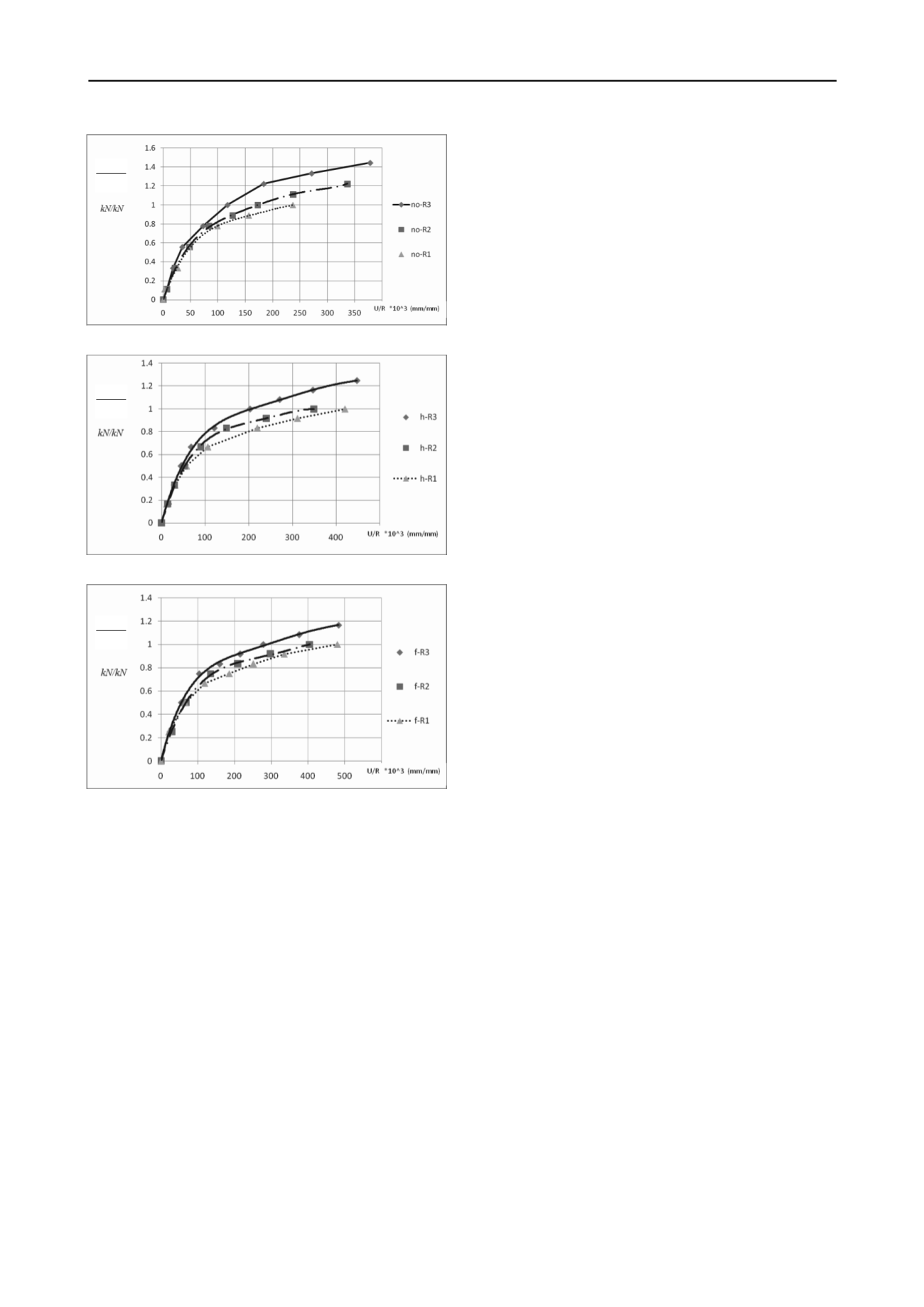
2496
Proceedings of the 18
th
International Conference on Soil Mechanics and Geotechnical Engineering, Paris 2013
6-a non-reinforced stone column
6-b half-length reinforced column
6-c full-length reinforced column
figure 6. test results for different stone columns materials embedded in
granular soil.
4 conclUsion
one of the recent methods for increasing the bearing capacity of
foundation soil is the use of vertical stone columns. stone
columns consist of a stiffer material or aggregates, compared to
the surrounding soils, which are usually vibrocompacted into
the soil. these columns increase the bearing capacity of the soil
significantly. compared to concrete or steel piles inclusion, for
soil improvement, this technique is more economical and needs
to be studied further. however, one of the major weaknesses in
use of stone columns in loose soils is lack of confinement. this
leads to use reinforcement to compensate low confinement
pressure in these soils. Because of the lack of experimental
studies on the behavior of reinforced stone columns, an
experimental study has been performed. it was shown that the
use of stone columns improves the soil bearing capacity,
significantly. the results showed that encapsulating stone
column with geosynthetic is more effective in cohesive soils
compared to granular soils. three types of stone column
materials were used with different aggregate dimensions. the
results of the experiments revealed that the coarser the
aggregate the better behavior is expected for the stone column.
although the increase in grain size should not be more than two
percent of stone column diameter. on the other hand, the
behavior of stone column encapsulated by geosynthetic in its
entire length was compared to partially encapsulated stone
column behavior. the results showed that, reinforcing half
height of stone columns in both types of soils, especially in
clay, is the optimal encapsulating length. this finding is
significant regarding the economical and efficiency of use of
stone columns as a soil improvement technique.
F
)
max(
no
F
5 references
Bergado, d.t. and teerawattanasuk, c. 2008. 2d and 3d numerical
simulations of reinforced embankments on soft ground
. Geotextiles
and Geomembranes
, 26, 39–55
.
castro, J., sagaseta, c. 2011. consolidation and deformation around
stone columns: numerical evaluation of analytical solution.
Computers and Geotechnics
38,354–362.
Guetif, a. Z., Bouassida, m., debats, J. m. 2007.improved soft clay
characteristics due to stone column installation.
Computers and
Geotechnics
34,104–111.
)
max(
no
F
F
Gniel, J., and Bouazza, a. 2009. improvement of soft soils using
geogrid encased stone columns.
Geotextiles and Geomembranes
27,
167–175 .
Gniel, J., and Bouazza, a. 2010. construction of geogrid encased stone
columns: a new proposal based on laboratory testing.
Computers
and Geotechnics
, 28, 108–118 .
hataf, n. and razavi, m. r., 2003. model test and finite element
analysis of ring footings on loose sand.
Iranian J. of Science &
Technology
, 27(B1), transaction B, 1-11.
malarvizhi, s. n. and ilamparuthi, K. 2007. comparative study on the
behaviour of encased stone column and conventional stone
column.
Soils and Foundations
, 47 (5), 873–885.
)
max(
no
F
F


